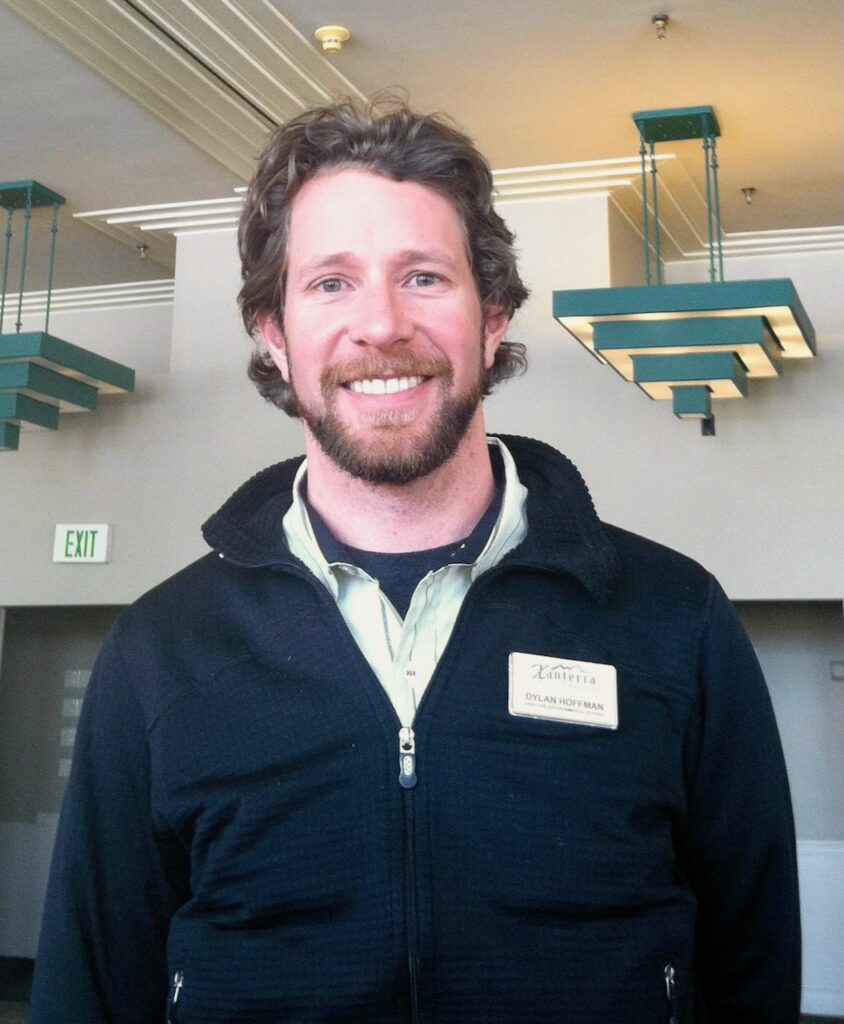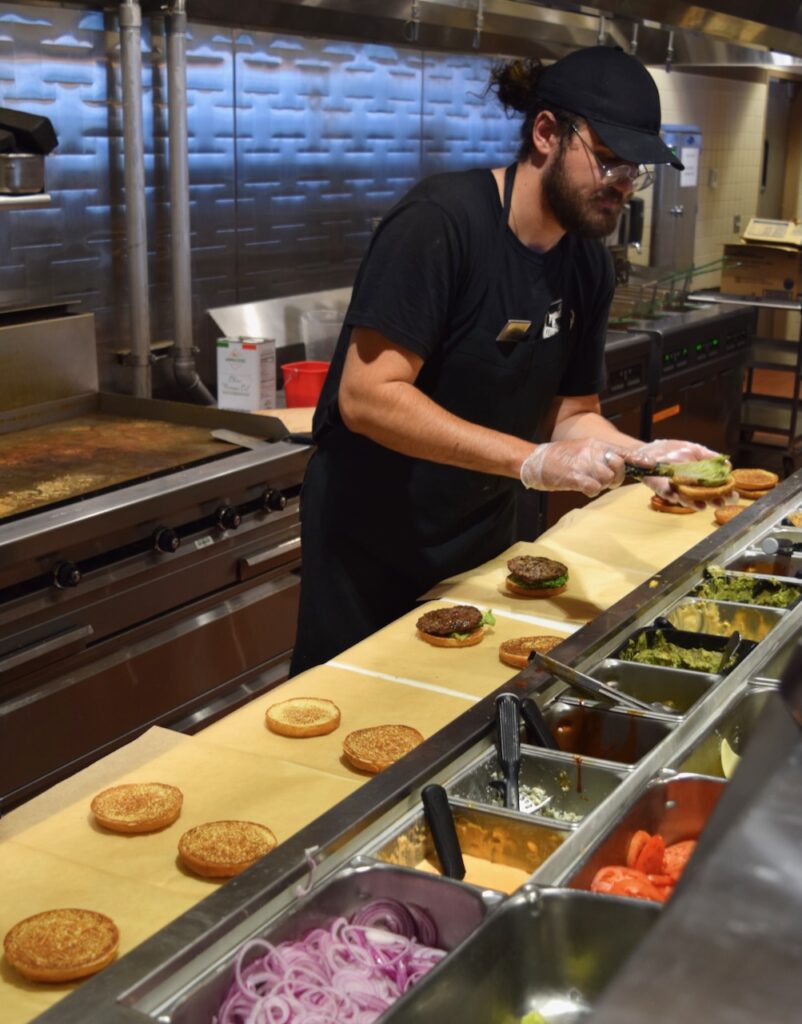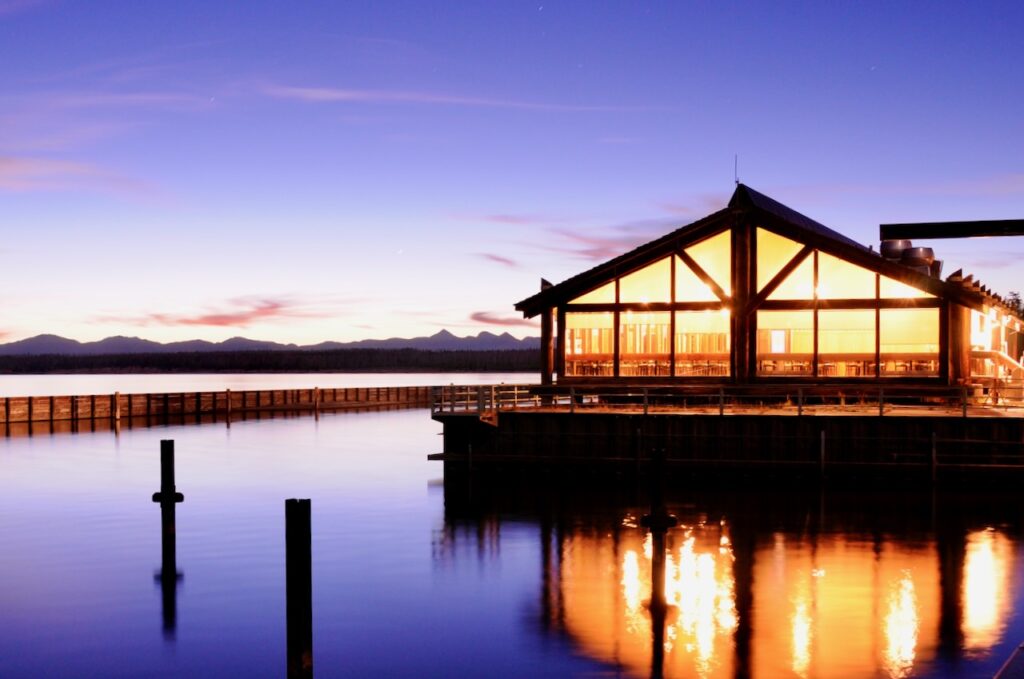
LAKE VILLAGE, Wyo. — Diners at venues across Yellowstone National Park probably aren’t thinking much about farm jobs in Wyoming or Montana as they peruse their menus. But the sustainability practices and immense purchasing power of the park’s primary restaurant operator means there is a direct connection between ordering a salad or cheese plate and supporting local farms and other small businesses around the region.
Xanterra Travel Collection, the park’s primary lodging and dining concessioner, typically serves over 2 million meals per year across nearly two dozen venues spread throughout Yellowstone. As part of its contract with the National Park Service, the company has set a goal of sourcing 70% of its menu items from sustainable sources.
For local suppliers, especially producers of natural and organic products, that creates a massive opportunity.

“Xanterra’s always been wonderful to us,” said Sue Brown, whose Amaltheia Organic Dairy supplies goat cheese to fine-dining restaurants in Yellowstone. “I feel like they go out of their way to find local products that fit with their menus.”
Brown and her husband, Melvyn, started their dairy near Bozeman, Montana in 2000, and for over a decade have supplied up to 5,000 pounds of cheese annually to Xanterra. The farm also grows vegetables and raises pigs, using goat manure as compost, and feeding the whey from cheese production to its pigs. The operation strives to be fully sustainable and produce zero emissions; it has won awards for its environmental practices.
Amaltheia is just one of several regional producers Xanterra uses to help meet its sustainability goals, which go beyond food sourcing to include factors like energy use, recycling and composting.
Flagging menu items as sustainable helps diners make informed choices while also showcasing the company’s green efforts, said Dylan Hoffman, director of sustainability for Xanterra.
“But with all of our sustainability programs, we want to make sure we’re educating our guests without being overly aggressive,” he said. “We also don’t want to make any unsubstantiated claims. We want to avoid the perception of ‘greenwashing.’”
Defining ‘sustainable’
Hoffman defines sustainable food as being produced within 500 miles, preferably using organic or natural practices. He also relies on third-party certifications and plant-based options to help guide purchasing decisions.

Xanterra’s food operations are currently a bit better than 60% sustainable, Hoffman said, with cost and logistics posing the biggest obstacles in improving that number. The Park Service also must review and approve menus for pricing and other factors, further complicating the supply-chain puzzle.
“When you talk about sustainable food, especially from a local production standpoint, we’re talking smaller family farms, but we are a very big operation,” Hoffman said. “So we need to figure out what suppliers we’re using well in advance of the season. And we need to lock down that pricing structure, because our menus don’t really change once they’re approved.”
Consequently, Xanterra often relies on individual local producers to supply a specific product for a single menu item at just one dining venue. This makes food sourcing more difficult than using a few large vendors, but it helps ensure the company’s high demand is less likely to overwhelm a provider.
But finding sustainable solutions for every operational factor isn’t always cost-effective or logistically plausible, Hoffman said, “especially because of the scale, size and scope of the operation.”
For instance, the company uses liquid eggs in making breakfasts that are available to its 2,700 summer employees, about half of whom work in food service. (Cracking hundreds of eggs each morning would greatly add to preparation time and expense.) But Hoffman has found no sustainable liquid egg producer—and doesn’t expect to any time soon.

Experiments yield results
Xanterra experiments with products and processes that most commercial operations would avoid due to their higher cost, unproven nature or logistical complications.
At one point, the company tested a way to recycle used vegetable oil as a heating fuel additive for hotel furnaces. Efforts like that have won Xanterra accolades and awards from environmental organizations. But more importantly, they have led to long-term practices that yield impressive results. For instance, Hoffman said, the company last year converted 2,985 gallons of cooking oil into biodiesel fuel.
A majority of diners don’t let sustainability issues dictate their food choices, with most people interested in local beers and spirits more than regional protein or vegetable options, Hoffman said. But for some, it’s an important consideration or at least a valued option.
“It’s nice that it’s available, but I don’t think it’s a big factor into my decision on what I choose to eat,” said Linda Zajac, who was visiting Yellowstone from Connecticut last month and ate dinner at Wylie’s Canteen, the dining room at Lake Lodge.

Zajac’s husband, Walt, ordered a double cheeseburger and found it “hardy and filling,” but wasn’t aware before ordering that the ground beef was from Mulvey Gulch Ranch in Boulder, Montana.
The company is part of Xanterra’s carbon grasslands program, which works with producers to implement regenerative ranching practices that build native grasses, enhance topsoil and lower emissions by sequestering carbon.
“That sounds great,” he said. “I’m happy to hear it, but I didn’t know all that.”
Though sustainable producers love to share with customers the stories behind their efforts, having a dependable demand for their output is critical.
“Xanterra does a really great job to try and get local farmers involved in their food program,” said Brown, of Amaltheia Organic Dairy, which has steadily grown its operations, partly because of being a Yellowstone supplier. The company now employs up to 25 people.
“That may not sound like a lot, but for us, it’s a big deal,” she said. “That’s pretty special.”
Republished with permission from Wyoming Truth.
